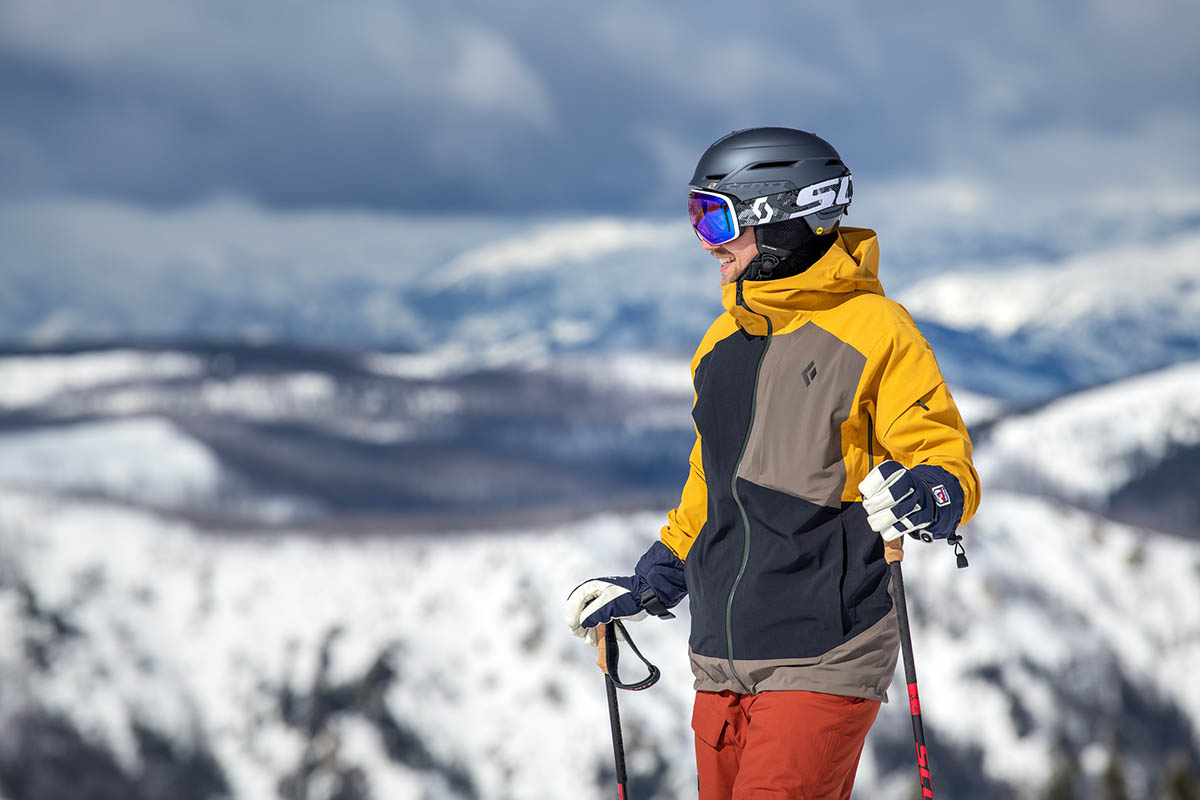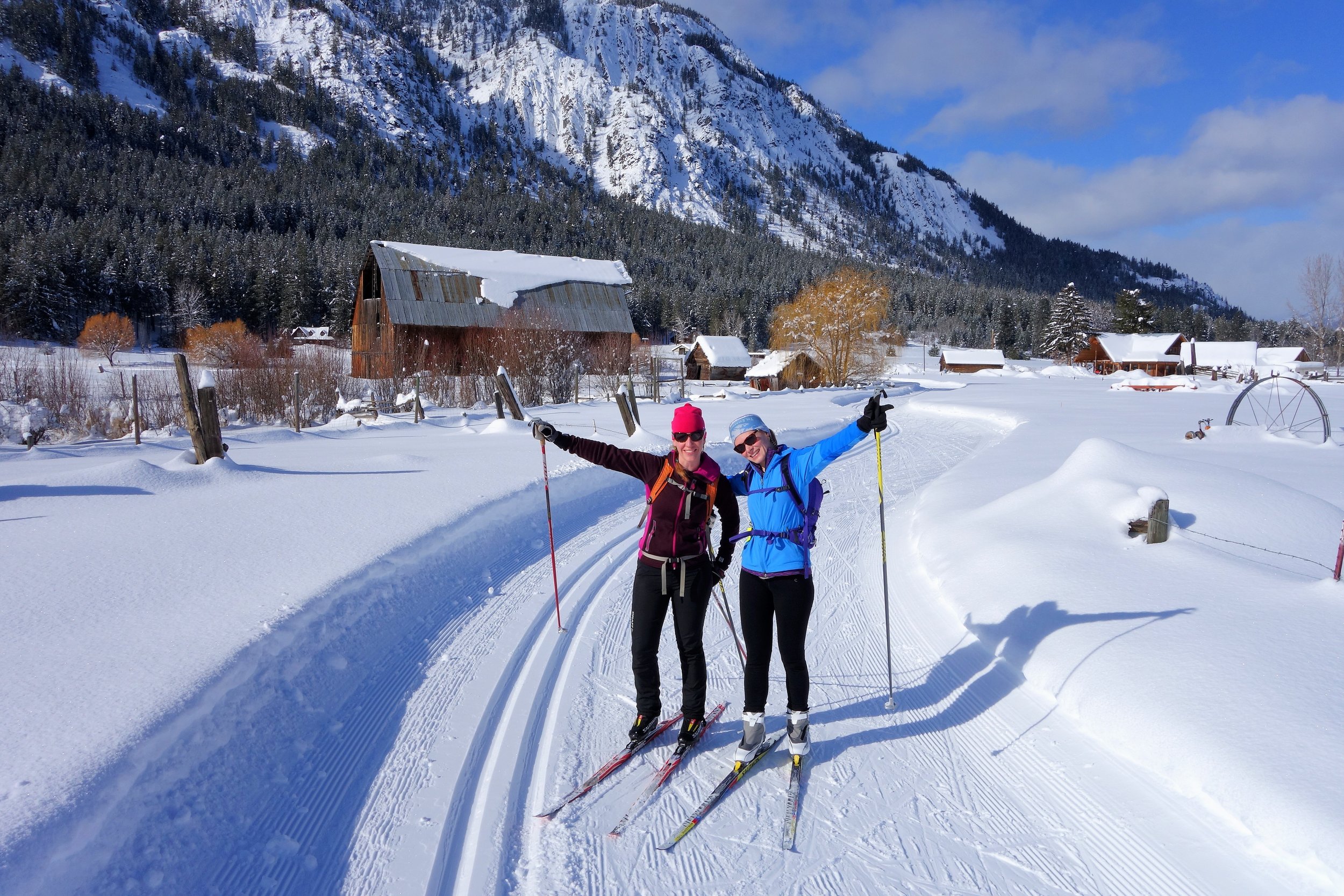
Whether you're hitting the slopes or simply walking through snowy areas, skinny snow pants will keep your legs warm and dry. They are also extremely durable and can withstand heavy winter use.
Snow pants for women - thin snow pants
The majority of thin snow pants are designed to be snug fitting in order to reduce wind resistance. They're usually made for backcountry skiing, alpine skiing or snowboarding. They're often lined with soft fleece, synthetic insulators or breathable fabrics.
Tight snow pants
Tight snow pants are more restrictive. However, they provide a better fit for those who have to move more when skiing or snowboarding. Also, they are made with stretchy materials that encourage movement. You can pair them with boots or overshoes for extra warmth and durability.

Short Snow Pants
Check out styles that are shorter and narrower, like the North Face Freedom or Columbia Bugaboo Omni Heat, if you want a pair of ski trousers with a casual look. These pants come in many colors and sizes. Their stretchy fabric allows you to move freely while on the slopes.
Navy Snow Pants
The snowy weather may have you feeling a bit jaded. Try these blue snow trousers. The four-way stretch fabric, seam-sealed design, and zippered pockets on both sides and hand pockets provide comfort for long days out on the slopes. A custom-fit waistband is also available.
Long Snow Pants
Longer snow pants allow for full range-of-motion, which is ideal if you are planning a large ski trip or just want a great pair of pants to stash in your winter gear. Stretchy material and an internal gusset make these pants a great choice for active outdoor women.
Quality Snow Pants
The top-notch snow pants out there aren't inexpensive, but they're worth the investment if you're looking for long-lasting performance, quality materials, and exceptional protection. These pants range from $120 for Columbia's Bugaboo omni-Heat to $600 for Arc'teryx's Sentinel. They offer the protection, durability, fit and feel you want, as well as the style.

Bibs: Cut higher to trap heat and protect against cold spots, bibs can be a little more expensive than straight pants. These are great for skiers, fat cyclists and anyone looking to stay warm and comfortable while out in the snow.
Zip Ankle Openings and Side Vents
Snow boots can be a pain to put on and take off, but the right pants will have ankle zips that are easy to open and close, as well as side vents that let you cool down after a long day on the slopes. You can also find gaiters and snow cuffs that fit snugly over your boot tops.
Apres Ski Pants
When you come home from a cold day on slopes, it is nice to slip into something warm and comfortable. That's where these apres-ski pants for women from O'Neill come in handy. These pants have a waterproof finish, are breathable and provide enough warmth for an after-ski drink.
FAQ
Should I get travel insurance?
Travel insurance is vital if you're planning to travel. You should ensure that you have coverage for all types and forms of adventure sports.
If you're skiing, for example, it is important to have medical coverage. It is also worth looking into coverage for theft, loss and damage.
It is also worth considering purchasing cancellation cover. This covers you from any possible penalties if you cancel your holiday.
Additionally, it is a good idea to ask for emergency evacuation coverage. This covers being evacuated off the mountain in an emergency such as an avalanche.
What snacks are allowed on an airplane?
You have many options for snacks to take with you when flying. You may want to consider bringing along any food items that you know you enjoy eating while traveling.
You might pack chocolates or other sweet treats, such as crisps, biscuits, and nuts.
Try packing some cheese and crackers if your goal is to make something savory.
It's also worth considering what kind of beverages you'd prefer to have aboard. Maybe you prefer hot or cold drinks?
Whatever kind of snack or drink that you choose to bring along with you, make sure everything is packed securely.
So you don't have to worry that they might get damaged on the road.
How can I travel light?
There are many options when it comes to packing for a trip. These tips will help guide you in choosing what to bring on your trip.
-
Only bring what you truly need.
-
Only bring what you are going to wear.
-
Do not overpackage yourself with items.
-
Take enough room in your suitcase
-
Double-check everything that you have packed.
-
You can take advantage of our free storage facilities
-
Reusable water bottles can be used instead of buying bottled.
-
Carry a backpack instead of using a suitcase.
-
Walk or cycle whenever possible instead of using public transport.
-
Choose the right size bag.
-
Avoid carrying bulky items.
-
Be prepared for any eventuality.
-
Do not leave anything behind
What should you never forget when traveling?
When you travel, you'll find yourself in situations with little time to make decisions. Prepare to be flexible.
You might be stuck somewhere for hours, days, weeks, or even months. You can plan ahead to ensure you have water, food, shelter, and somewhere to sleep. But, if not, you might have the need to improvise.
These cases will likely require you to rely on the things you are most skilled at. This means that you will need to make quick decisions based on your intuition and experience.
Sometimes you don't have a choice. It could happen that you are stranded without cell phone coverage, run out of gas, or have been robbed. You'll need to adapt quickly to these situations.
Keep calm, be focused, and take action. Don't panic. Instead, focus on what you can control.
For example, if you're lost in the woods, you can choose which direction to go. For those who are hungry, berries and mushrooms can be eaten. If you're thirsty, you can drink rainwater or melt snow.
Or if you're tired, you can rest. You can wrap up if you're cold. If you get wet, you can put on clothes. No matter what you do, it will make you feel better to stay positive.
Where can I store my luggage safely?
There are many options. You can use lockers at airports as the most common option. These are normally located near the security area. They can be purchased for between $5-10 per daily, depending upon the size of the locker.
Another option is to rent a storage unit. These units are often located in large shopping centers or hotels. While prices can vary, there are some places that offer discounts for multiple units being rented together.
Another option is to hire porters. A porter will transport your luggage from the carousel into your room. A small fee is charged each time the porter helps you.
Are you concerned about what you might lose when you travel?
Yes, I often forget stuff. This happens especially when I'm going on a short trip. But luckily, I always have everything with me, so I never run out of anything.
For example, my passport is always with me. When I buy tickets, I always ensure that I have enough cash.
I also always have my phone charger with me. Also, I have a small bag that I store my other items in.
How do I prepare my body for vacation?
To maintain a healthy lifestyle on vacation, you must eat well and exercise regularly.
Before you leave for work, it is important to be well-hydrated and rested.
Be sure to have all your travel documents and medications on hand.
Make sure you have enough medication to last you until your return.
Finally, be sure to pack a change of clothes in case you get sick or injured.
Statistics
- Case in point: the private island of Ilha Caldeira, less than seven miles off the coast as part of the Primeiras and Segundas Archipelago, is located within the marine-protected area with 20 percent of the country's intact living coral. (travelandleisure.com)
- Alcoholic beverages with 24% alcohol or less are not subject to limitations in checked bags. (tsa.gov)
- Pack sweaters, jackets, and underwear in reusable compression bags creating up to 75% more space in your luggage. (wikihow.com)
- They're also likely to offer babysitting services, in case you'd like to have dinner one night after 7 p.m. (travelandleisure.com)
- You can use compression sacs or cubes to reduce the volume of your clothes by up to 80%—this is especially convenient for bulky items such as sweaters and jackets. (eaglecreek.com)
External Links
How To
How to plan for your next holiday
Planning a trip involves many things like booking flights, hotels, car rentals, activities, etc. It also includes important considerations such as budget, schedule, destination, weather forecast, etc.
These points should be kept in mind while you are planning your next holiday.
We have prepared a step-by, step guide to help with your next vacation planning. This guide is based on customer feedback and our experience. We hope you find this guide helpful and easy to follow when planning your next vacation.
Steps:
-
Your Budget Plan - It is important to plan your budget before you start planning your trip. Before you begin planning for your trip, you need to know how much money it is you are willing and able to spend. You might have to cancel your plans if you don't have enough money.
-
Book Your Flights. After you have decided on your budget, book your tickets. Be sure to get the lowest price flight deal. Make sure to check for special offers during peak seasons. These deals may save you money.
-
Select Your Destination - After you have booked your flight, you will need to choose where you want to travel. Multiple factors will play a role in choosing the destination you choose, such as location (wherever you are), climate (what season), culture (how friendly and affordable it is), cost (how affordable it can be) and cost.
-
Finding Accommodations - Once you have chosen your destination, it is time to find accommodations. Various accommodation options are available, ranging from cheap hostels to luxury suites. The type of accommodation you choose will depend on your preferences and needs. For example, staying in a hotel may not be ideal if you're looking for a place close to the city center. If you prefer quiet, peaceful places, a homestay may be the best option.
-
Select Activities and Attractions - Now is the time for you to choose the attractions and activities that you want to include in your itinerary. Depending on your length of stay, you may choose to add or remove activities.
-
Determine Schedule - Now that you've selected the activities and attractions you'd like to include, it's time to determine your itinerary. Sticking to a plan will help you maximize the value of your trip. However, if you're free to move around at your convenience, you can enjoy your trip even more.
-
Make an itinerary - This is where you include all details about your trip. Write down all details about your trip, including flights, accommodation, activities, and restaurants.
-
Research Online - Do your research online before you travel. Review and read testimonials to learn what travelers have to say about a destination. This will enable you to plan accordingly.
-
Pack Lightly - One of the biggest mistakes people make when packing is bringing too many clothes. Do not bring more than three sets of clothes. Make sure you bring clothes that are appropriate for the area.
-
Always be prepared Have everything ready before setting off for your trip. Don't waste time searching for important documents in transit.